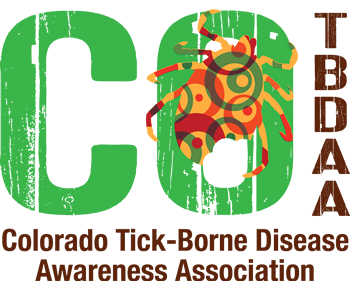
Ehrlichiosis
What is Ehrlichiosis?
Originally known to affect dogs and livestock, this disease was identified in humans in the US in 1986. Human Ehrlichiosis is a disease caused by at least three different Ehrlichial species in the United States: Ehrlichia chaffeensis, Ehrlichia ewingii, andE. muris eauclairensis. Ehrlichiosis is the general name used to describe several bacterial diseases that affect animals and humans. which are transmitted by the bite of an infected tick. People are most likely to be infected with Ehrlichia in spring and summer months when tick activity is higher, though cases occur into autumn as well. Ehrlichiosis is most frequently reported from the southeastern and south-central United States, from the eastern seaboard extending westward to Texas.
Ehrlichiosis infects the white blood cells of various mammals, including mice, cattle, dogs, and humans. E. chaffeensis targets monocytes and is referred to as “human monocytic ehrlichiosis” (HME). E. ewingii invades neutrophil granulocytes and resembles Anaplasma phagocytophilum, the agent of Human Granulocytic Anaplasmosis (HGA). To avoid confusion with HGA, this disease entity is often called “human ewingii ehrlichiosis.” Though Anaplasmosis is closely related to Ehrlichiosis, the two have distinct differences and are caused by different microorganisms.
The lone star tick (Amblyomma americanum) is considered the primary vector of both Ehrlichia chaffeensis and Ehrlichia ewingii in the United States, although human cases have been reported in states with no known population of these ticks.
The blacklegged tick (Ixodes scapularis) transmits E. muris eauclairensis in the upper midwest, though blacklegged ticks in both the NE (I. scapularis) and on the West coast (Ixodes pacificus) have been found to carry Ehrlichiosis bacteria.
The American dog tick, (Dermacentor variablis) is suspect as a vector.
Although Ehrlichiosis is a nationally reportable disease, reporting is passive, and the true incidence of the Ehrlichia infection is assumed to be much higher. The primary reservoir host for E. chaffeensis is known to be the white tailed deer (Odocoileus virginianus). White-tailed deer are naturally infected with the bacteria and are considered as the only vertebrates recognized as a complete and sufficient host for maintaining the transmission cycle of E. chaffeensis. Next to the white- tailed deer, domestic dogs and domestic goats also act as important reservoir hosts for Ehrlichia. Less is known about additional vertebrates that may serve as competent reservoirs of this emerging disease.
Because Ehrlichia bacteria infect the white blood cells and circulate in the blood stream, these pathogens may also pose a risk of transmission through blood transfusions and organ transplant.
Is Ehrlichiosis in Colorado?
Ehrlichiosis did not become a reportable disease in the US until 1999, however it remains a non-notifiable disease in Colorado. The primary vector of this disease, the Lone star tick (Amblyomma americanum) is considered a rare visitor to Colorado and is probably not established, however surveillance of tick vectors in Colorado has been minimal. Companion Animal Parasite Council prevalence maps display an increasing incidence of Ehrlichiosis in dogs within Colorado.
What are the Symptoms of Ehrlichiosis?
Most people that are infected with Ehrlichia develop symptoms 1-2 weeks after the tick bite. Although most cases of HME are uncomplicated, it is a potentially serious, sometimes fatal illness. The following is a list of symptoms commonly seen with this disease. It is important to note that the combination of symptoms varies greatly from person to person:
- Fever
- Headache
- Chills
- Malaise
- Muscle pain
- Nausea / Vomiting / Diarrhea
- Confusion
- Conjunctival injection (red eyes)
- Rash (in up to 60% of children, less than 30% of adults)
Ehrlichiosis is a serious illness that can be fatal if not treated correctly, even in previously healthy people. Severe clinical presentations may include difficulty breathing, or bleeding disorders. Complications of Ehrlichiosis include prolonged fever, a toxic or septic shock-like syndrome, coagulopathy, adult respiratory distress syndrome, and central nervous system manifestations such as meningoencephalitis, seizures and coma. Peripheral neuropathies, primarily cranial neuritis, are rarer, but have also been reported.
The severity of Ehrlichiosis may depend in part on the immune status of the patient. Patients with underlying immunosuppression, such as organ transplant recipients, HIV or cancer are at greater risk, as are those with co-infection with Lyme or other tick-borne diseases. However, severe and even fatal cases have been reported in previously healthy children and young adults.
How is Ehrlichiosis Diagnosed?
As with many other tick-borne diseases, the symptoms vary from patient to patient and can be difficult to distinguish from other diseases. Early diagnosis and treatment is important for best outcome.
The CDC states “The diagnosis of ehrlichiosis must be made based on clinical signs and symptoms, and can later be confirmed using specialized confirmatory laboratory tests. Treatment should never be delayed pending the receipt of laboratory test results, or be withheld on the basis of an initial negative laboratory result”
Early diagnosis is critical due to the potential for severity of illness. Common findings on conventional blood tests include leukopenia, thrombocytopenia and elevated serum transaminases. These findings, which are also found in Rocky Mountain spotted fever, should prompt physicians to seriously consider empiric antibiotic treatment, especially if the patient is from an endemic area or has a history of recent tick exposure.
Testing
The most useful diagnostic test for Ehrlichiosis is thought to be polymerase chain reaction (PCR) during the acute stage of illness (first week). Antibiotic treatment negatively affects PCR sensitivity, so blood samples for PCR testing should be drawn before treatment has been initiated. Although a positive PCR result is helpful, a negative result does not completely rule out the diagnosis.
Also during the acute stage of illness, morulae (colonies of bacteria) may be detected in blood smears in about 20% of patients. E. chaffeensis most commonly infects monocytes, whereas E. ewingii more commonly infects granulocytes. However, the observance of morulae in a particular cell type cannot conclusively identify the infecting species.
Antibodies to Ehrlichia species are detectable 7-10 days after illness onset. The gold-standard serologic test looks for a four-fold change in IgG-specific antibody titers using indirect immunofluorescence assay (IFA) on paired samples. The first sample should be taken within the first week of illness and the second should be taken 2 to 4 weeks later.
- Demonstration of a four-fold change in IgG-specific antibody titer by indirect immunofluorescence assay (IFA) test in paired serum samples; or
- Detection of DNA by PCR on whole blood. This method is most sensitive within the first week of illness; may decrease in sensitivity after administration of antibiotics.
It is important to note that antibodies are not detectable in the first week of illness in 85% of patients, and a negative test during this time does not rule out Ehrlichiosis as a cause of illness.
Culture of E. chaffeensis is possible from either blood or cerebrospinal fluid, but because results can take at least two weeks, it is useful only for confirmation of the diagnosis. Treatment should not be held if the disease is suspected. Culture isolation of Ehrlichia is only available at specialized laboratories; routine hospital blood cultures cannot detect Ehrlichia.
How is Ehrlichiosis Treated?
Patients who are treated early may recover quickly on outpatient medication, while those who experience a more severe course may require intravenous antibiotics, prolonged hospitalization or intensive care.
The CDC states: “Early treatment with the antibiotic doxycycline can prevent death and severe illness. Doxycycline is the recommended antibiotic treatment for ehrlichiosis in adults and children of all ages.”
Columbia University Lyme and Tick-Borne Diseases Research Center states that “ No treatment studies have been performed for Ehrlichiosis, but empiric evidence indicates that tetracyclines are highly effective against both E. chaffeensis and E. ewingii. The most commonly employed regimen is oral doxycycline at a dose of 100 mg every 12 hours, for 5-14 days. (Doxycycline is also recommended for pediatric patients.) In severe cases, intravenous therapy is used or antibiotic treatment is extended. Consensus exists that in all cases, treatment should be continued in all patients for at least 3-5 days after the fever subsides. In cases where doxycycline is contraindicated, such as pregnancy or allergy, rifampin is usually the alternative choice. Little data exists to support the use of any other antibiotic, as cephalosporins, macrolides, beta lactams and aminoglycosides are all inactive against Ehrlichia organisms in vitro.”
References
Companion Animal Parasite Council
Columbia University-Lyme and Tick-borne Diseases Research Center
Centers for Disease Control and Prevention
2020 Ehrlichiosis and Anaplasmosis Subcommittee Report to the Tick-Borne Disease Working Group






